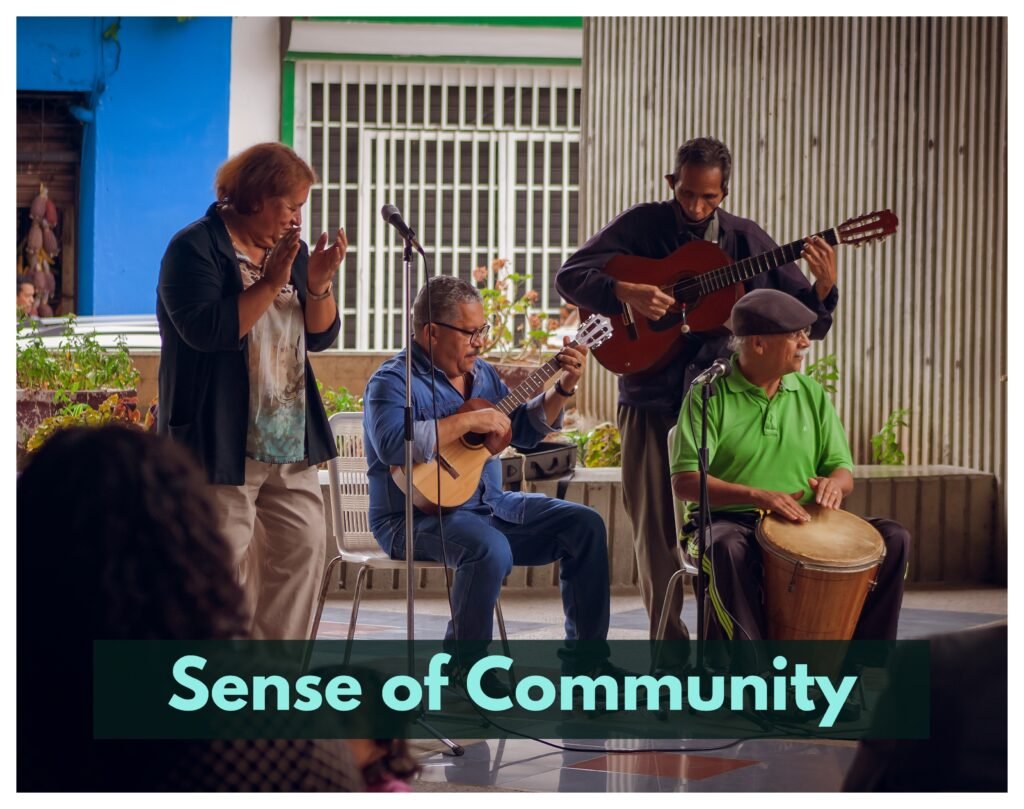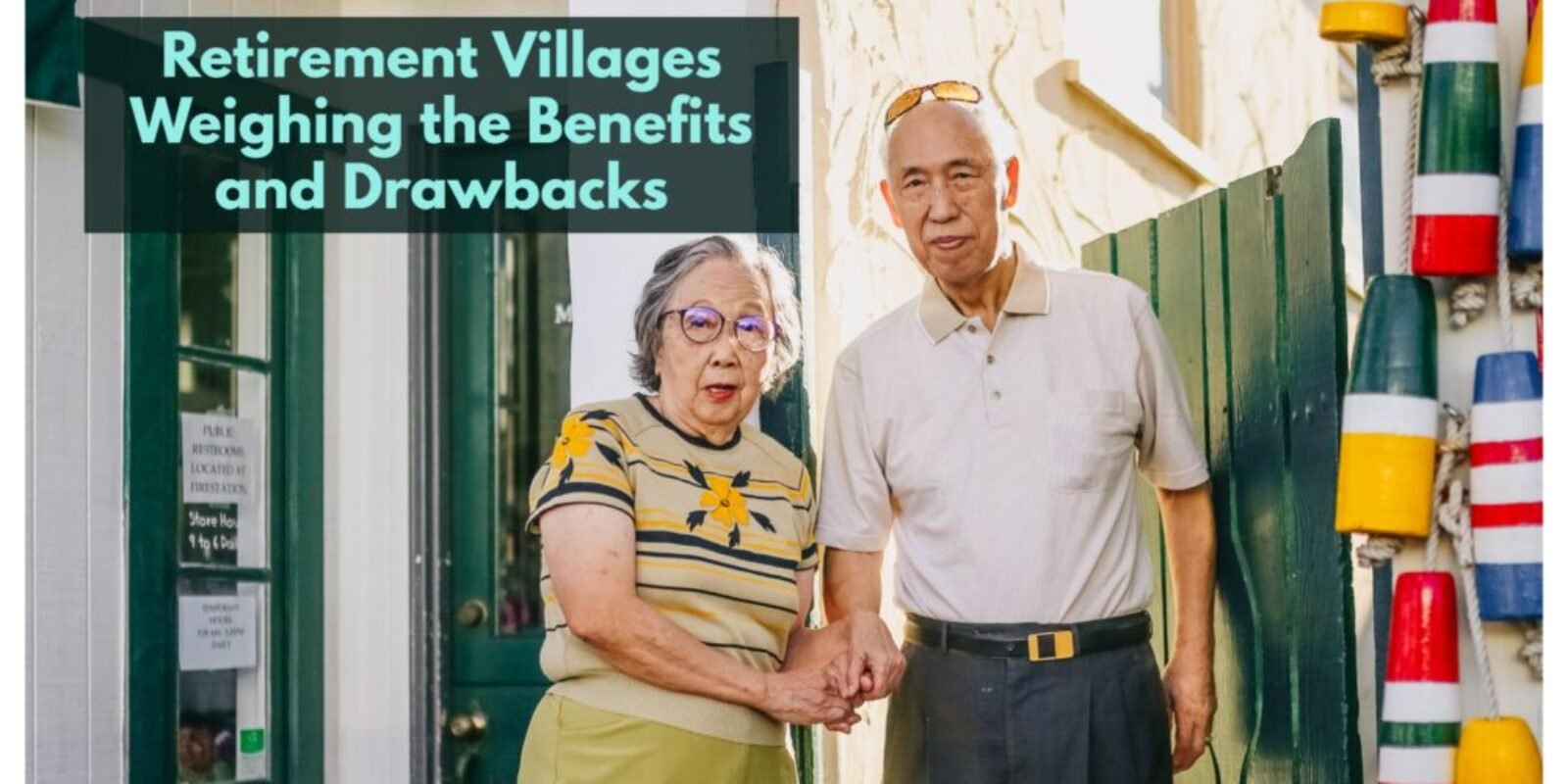Last Updated on June 27, 2025 by Julian Espinosa
Choosing the right living arrangement for your retirement years is one of life’s most significant decisions. Retirement villages have emerged as an increasingly popular option, offering a unique blend of independence, community, and security that appeals to many active adults over 55. But are they right for you?
Recent research reveals some compelling statistics: residents in retirement villages are 41% happier, 15% more physically active, and five times more socially active than their peers in the wider community. These communities provide purpose-built housing designed specifically for mature adults, complete with amenities like swimming pools, fitness centers, libraries, and organized social activities.
However, retirement village living isn’t just about the lifestyle — it’s also a significant financial commitment. Understanding the various costs, from entry fees to ongoing service charges, is crucial for making an informed decision. You’ll also want to consider factors like proximity to healthcare services, transportation options, and the level of independence you desire.
In this comprehensive guide, we’ll explore both the compelling advantages and potential drawbacks of retirement village living. We’ll examine the financial implications, discuss what to look for when choosing a community, and help you determine whether this lifestyle aligns with your retirement goals.
Whether you’re seeking enhanced security, vibrant social connections, or simply want to downsize without sacrificing quality of life, understanding these key considerations will empower you to make the best choice for your future. Ready to discover if retirement village living could be your perfect next chapter?
Benefits of Living in a Retirement Village
Retirement villages represent a lifestyle choice that goes far beyond simply finding a place to live. These purpose-built communities are designed specifically for adults over 55 who want to maintain their independence while enjoying enhanced security, social connections, and convenient access to services and amenities.
Living in a retirement village may seem immensely attractive to many mature adults, from the convenience and companionship to the safety and security that comes with it. However, if you’re thinking about making the move to a retirement village, it’s important to consider all aspects of retirement living before making a decision. Although the perks may be enticing, it’s crucial to consider the downsides of retirement village life.
Here are some potential pros of living in a retirement village:
Prefer to listen rather than read?
Sense of Community
One of the most commonly cited benefits of retirement villages is the sense of community they offer. Many seniors find that living in a retirement village allows them to connect with like-minded individuals and form new friendships and social networks.

Opportunity to Participate in a Wide Range of Social Activities and Events
In a retirement village, residents often have the opportunity to participate in a wide range of social activities and events. These may include group outings, fitness classes, cultural events, and educational programs, among others. By participating in these activities, seniors can meet new people, develop common interests, and build relationships with others in the community.
In addition, the proximity of other residents in a retirement village can also promote socialization. Because residents are often living near one another, they may have more frequent opportunities to interact and develop friendships. The sense of community and socialization offered by retirement villages can be particularly valuable for seniors who may be at risk of social isolation or loneliness.
According to the National Institute on Aging, social isolation and loneliness can have negative impacts on physical and mental health, including increased risk of depression, cognitive decline, and cardiovascular disease. The opportunity to connect with like-minded individuals and form new friendships and social networks is a significant potential benefit of living in a retirement village.
Convenience
Another potential benefit of retirement villages is the convenience they offer. Many retirement villages provide a range of amenities and services that can make life easier and more comfortable for seniors.
For example, some retirement villages may offer housekeeping services, which can help seniors keep their living spaces clean and tidy without having to worry about the physical demands of cleaning themselves.
Housekeeping Services and Meal Preparation Services
Similarly, meal preparation services can be a valuable convenience for seniors who may have difficulty with meal planning, preparation, and clean-up. These services can ensure that residents can access nutritious and delicious meals without the burden of cooking for themselves. Transportation is another convenience that many retirement villages provide.
Shuttle Services and Medical Assistance
Some villages may offer shuttle services to local shopping centrs, medical appointments, or other locations. This can be particularly valuable for seniors who may have difficulty driving themselves or using public transportation. Many retirement villages also offer access to on-site healthcare services, which can be a significant convenience for seniors who need regular medical care or assistance with daily living tasks.
For example, some retirement villages may have nursing staff available to help with medication management, wound care, or other medical needs. This can provide peace of mind for residents and their families, knowing that medical care is close at hand.
The convenience offered by retirement villages can be a valuable benefit for seniors, allowing them to focus on enjoying their retirement years without having to worry about the physical demands of daily life.

Security
Security is a broad term that refers to measures taken to protect individuals, property, or information from harm, damage, or unauthorized access. In the context of retirement villages, security is an important consideration to ensure the safety and well-being of residents.
Gated Entrance
Gated entrances are one of the most visible security features of many retirement villages. These entrances are typically monitored by security personnel, who control access to the community and ensure that only authorized individuals are allowed entry.
Gated entrances can help to deter unwanted visitors, including would-be intruders, and create a sense of privacy and exclusivity within the retirement community.
Surveillance Cameras
Surveillance cameras are another common security feature in retirement villages. These cameras can be used to monitor common areas and parking lots, as well as to detect potential security threats or suspicious behaviour. In the event of an incident, surveillance footage can be used to identify suspects or provide evidence for investigations.
Emergency Response Systems
Emergency response systems are also important security features in retirement villages. These systems typically include panic buttons, medical alert systems, and other devices that allow residents to quickly and easily call for help in the event of an emergency.
In many cases, emergency response systems are monitored by security personnel or medical professionals, who can dispatch assistance as needed.
Security Awareness Campaigns
In addition to these physical security features, retirement villages may also have policies and procedures in place to protect residents from financial fraud, identity theft, and other forms of cybercrime.
This may include training programs, security awareness campaigns, and other initiatives designed to educate residents about the risks and best practices for protecting their personal information.
Overall, security is an essential aspect of any retirement village, and the presence of robust security measures can provide peace of mind for residents and their families.

Lifestyle Benefits
Retirement villages offer a range of lifestyle benefits that can enhance the physical, social, and mental well-being of residents. These benefits can vary from community to community but often include access to fitness facilities, swimming pools, recreational activities, and more.
Exercise Studios
Fitness facilities are a common feature of many retirement villages and may include gyms, exercise studios, and other spaces designed for physical activity. These facilities are typically equipped with a range of exercise equipment, such as treadmills, stationary bikes, weights, and more.
Some retirement villages may also offer fitness classes or personal training sessions to help residents achieve their fitness goals.
Swimming Pools
Swimming pools are another popular amenity in retirement villages. These pools can provide a refreshing way to stay active and healthy, and may also offer opportunities for socializing and relaxation.
Many retirement villages offer aqua aerobics or water exercise classes, which can be a low-impact way to improve cardiovascular health and strengthen muscles. Recreational activities are also an important lifestyle benefit in retirement villages.
These activities may include arts and crafts classes, book clubs, gardening groups, and other social activities. Many retirement villages also offer organized outings to local attractions, such as museums, theatres, and restaurants, which can provide opportunities for residents to explore their community and meet new people.
Fun Activities
Overall, lifestyle benefits are an important consideration for anyone considering a retirement village. By providing access to a range of physical, social, and other activities, retirement villages can promote overall health and well-being and help residents maintain an active and fulfilling lifestyle in their later years.

Supportive Environment
Retirement villages are designed to provide a supportive and caring environment for seniors, particularly those who may require assistance with daily living tasks or have ongoing health issues. This type of living arrangement can offer a range of benefits, including access to professional care services and assistance with activities of daily living.
In addition, retirement villages may offer rehabilitation services, such as physical therapy, occupational therapy, and speech therapy, to help residents recover from injuries or manage chronic conditions. Assistance with activities of daily living (ADLs) is another important aspect of retirement village life.
Many communities offer assistance with tasks such as bathing, dressing, and grooming, as well as medication management and transportation to medical appointments. These services can help residents maintain their independence and quality of life, even if they require additional support.
Sense of Purpose
Retirement villages can offer a variety of opportunities for seniors to contribute to the community, such as through volunteering or participating in social and cultural events. These opportunities can provide a sense of purpose and fulfilment for residents, as well as promote social connections and a sense of belonging.
Volunteer Opportunities
Volunteering is a popular way for seniors to give back to their community and help others. Many retirement villages offer volunteer opportunities within the community, such as assisting with social events or providing support to fellow residents.
Some communities may also have partnerships with local organizations, such as hospitals or schools, that provide volunteer opportunities for residents. In addition to volunteering, retirement villages may also offer opportunities for residents to participate in social and cultural events.
Opportunities to Share Their Skills and Knowledge With Others
This can include things like organizing book clubs, discussion groups, or cultural celebrations. These events can provide opportunities for residents to socialize, learn new things, and engage with others who share similar interests. Some retirement villages also offer opportunities for residents to share their skills and knowledge with others.
For example, a resident who is a retired teacher may be invited to teach a class on a specific topic or skill. This can provide a sense of purpose and fulfilment for the resident, as well as offer a valuable learning opportunity for other residents.

Retirement villages can offer a variety of ways for seniors to contribute to the community and engage in meaningful activities. These opportunities can help to combat feelings of isolation or loneliness, as well as provide a sense of purpose and fulfilment.
By promoting social connections and a sense of belonging, retirement villages can help residents maintain a high quality of life and enjoyment during their retirement years.
Drawbacks of Living in Retirement Villages
However, the drawbacks of retirement village living can be just as numerous as the advantages. We’ve put together a list of cons to help you weigh the benefits and drawbacks of retirement village living. Here are some potential cons of living in a retirement village:
Cost
Cost is one of the major factors to consider when evaluating retirement villages. Living in a retirement village can be expensive, and the fees and costs may be prohibitive for some seniors. The cost of living in a retirement village can vary widely depending on the location, the size and style of the residence, and the range of services and amenities that are included.
Monthly Fees That Cover Services and Amenities
Many retirement villages have an upfront entrance fee, which can be a significant expense. In addition to the entrance fee, there are often ongoing monthly fees that cover services and amenities such as property maintenance, security, and access to facilities like the fitness centre or pool. These fees can add up quickly, and it is important for seniors to carefully review the costs associated with a retirement village before making a decision.
Unexpected Fees or Expenses That Arise Over Time
Another potential cost that seniors should be aware of is the possibility of unexpected fees or expenses that arise over time. For example, if the retirement village needs to make major repairs or upgrades, residents may be asked to contribute to a special assessment to cover the costs.
This can be an unexpected expense that can put a strain on seniors’ finances, particularly if they’re on a fixed income.
Despite the potential costs associated with living in a retirement village, it’s important to note that many seniors consider the services, amenities, and community to be well worth the investment. By carefully considering the costs and benefits of living in a retirement village, seniors can make an informed decision that aligns with their financial goals and overall lifestyle preferences.

Loss of Independence
The loss of independence is a common concern for many older adults who are considering moving to a retirement village. While these communities can offer many benefits, they may also have rules and regulations in place that limit the autonomy and freedom of their residents.
For instance, retirement villages may have set schedules for meals, activities, and other services that residents are expected to follow. While this structure can be helpful for some individuals, it may not be ideal for those who prefer a more flexible lifestyle.
Additionally, some retirement villages may have restrictions on the number or frequency of visitors that residents are allowed to have. This can be a difficult adjustment for those who are used to having frequent social interactions with friends and family members.
While these rules and regulations are often put in place to ensure the safety and well-being of residents, they can also be perceived as an infringement on individual autonomy. It’s important for older adults to carefully consider the potential loss of independence when deciding whether a retirement village is the right choice for them.
Limited Privacy
The limited privacy in retirement villages can be a significant adjustment for some residents who are accustomed to living in a private home or apartment. One of the main reasons for limited privacy is the proximity to neighbours, which can result in an increased level of noise and the possibility of overhearing conversations or other private interactions.
The lack of sound insulation in walls or ceilings may further exacerbate this issue. For residents who value their privacy and personal space, this can be a significant issue. In addition, staff members may enter their living space regularly for maintenance, cleaning or other reasons.
Although this is often necessary to maintain a clean and safe environment, it can still be difficult for some residents to adjust to having someone else in their personal living space. This can be especially challenging for those who are accustomed to living alone and having control over their living environment.
Limited Healthcare Options
One of the benefits of living in a retirement village is the availability of on-site healthcare services. Many retirement villages have nurses or other medical professionals on staff who can provide basic medical care and assistance with daily living activities. However, it’s important to note that the level of care offered by these services may be limited, and residents may need to seek additional medical care outside of the community.
Residents who require more intensive medical care or treatment may need to seek medical attention from outside healthcare providers, such as hospitals or specialists. This can be a significant consideration for individuals with chronic or complex medical conditions that require ongoing treatment and monitoring.
In such cases, it may be necessary for residents to arrange for transportation to medical appointments, which can be challenging for those who are no longer able to drive or have limited mobility.
Another factor to consider is the cost of healthcare services, which can vary depending on the level of care needed and the healthcare provider. While some retirement villages may include healthcare services as part of their overall fees, others may require residents to pay additional fees for medical care. This can be a significant expense for residents who are on a fixed income and may limit their ability to access the medical care they need.
It’s important for individuals considering a move to a retirement village to carefully evaluate their medical needs and the level of care that is available within the community. They should also consider the availability and cost of medical care outside of the community, and how they will access such care if needed.

Making the Right Choice for Your Future
Evaluate Your Personal Priorities
Before making any decisions about retirement village living, take time to honestly assess what matters most to you in this stage of life. Are you seeking enhanced security and peace of mind? Do you value social connections and organized activities? Is maintenance-free living a priority, or do you enjoy the responsibility of caring for your own property?
Consider your current lifestyle and how it might translate to a retirement village setting. If you’re someone who values privacy and independence above all else, the community-focused lifestyle might feel overwhelming. Conversely, if you’re looking for ways to stay active and engaged, the structured social environment could be exactly what you need.
Assess Your Financial Readiness
Retirement village living requires careful financial planning. Beyond the initial entry costs, you’ll need to budget for ongoing monthly fees that typically increase annually. Consider how these expenses fit into your overall retirement budget and whether they leave room for other important expenses like travel, hobbies, or unexpected healthcare needs.
Don’t forget to factor in the potential impact on your estate planning. Since most retirement villages don’t offer traditional ownership, understand how this arrangement affects your ability to leave assets to your loved ones.
Research Communities Thoroughly
You should visit several retirement villages because they will look and feel different and it will help you understand the lifestyle and amenities offered. Each community has its own personality, culture, and approach to senior living.
Spend time talking with current residents about their experiences, both positive and challenging. Ask about the management company’s responsiveness, how conflicts are resolved, and what changes they’ve seen since moving in. Request detailed financial information and have it reviewed by a financial advisor or attorney who understands retirement village contracts.
Consider Your Long-Term Care Needs
Think about how your needs might change over time. The Retirement Living Council’s report found retirement communities are currently delaying the entry of around 11,600 people into residential aged care by around two years. This statistic highlights how retirement villages can support aging in place, but it’s important to understand what level of care your chosen community can provide as your needs evolve.
Some communities offer a continuum of care that includes assisted living and memory care services, while others are designed primarily for independent residents. Choose a community that aligns with your long-term care preferences and financial planning.
Conclusion
In conclusion, while retirement villages can be an excellent living situation for seniors, it’s important to be aware of the various factors associated with this decision. It’s important to consider the cost of living in a retirement village, which can sometimes be higher than in a traditional residential property.
Retirement villages may offer extra amenities, such as access to recreational activities or a communal clubhouse, that can be appealing to some seniors. However, it’s important to consider whether the cost of these additional amenities is worth the expense. It’s advised to think carefully about the advantages and disadvantages of this type of living arrangement. This ensures that seniors are aware of what to expect and can make an informed decision about whether a retirement village is the right choice for them.
By weighing the benefits and drawbacks, individuals can determine whether the lifestyle, amenities, and services offered by a retirement village are in line with their needs and preferences. So, what do you think? Would you want to retire in a retirement village?
Frequently Asked Questions
- What’s the difference between a retirement village and assisted living?
- Retirement villages are designed for active, independent adults over 55 who can care for themselves but want access to amenities and community. Assisted living facilities provide personal care services for those who need help with daily activities like bathing, dressing, or medication management. Many retirement villages offer a continuum of care that includes assisted living options as residents’ needs change.
- How much does it typically cost to live in a retirement village?
- Costs vary significantly based on location, unit size, and services included. Entry fees can range from $200,000 to over $1 million, with ongoing monthly fees typically between $2,000 and $5,000. It’s essential to understand all costs upfront, including potential exit fees, and factor in annual increases to monthly charges.
- Can I rent instead of buying into a retirement village?
- Yes, many retirement villages now offer rental options alongside traditional entry fee arrangements. Rental agreements typically require lower upfront costs but may result in higher monthly payments. This option provides more flexibility for those who want to try retirement village living without the major financial commitment.
- What happens if I need to move out due to health changes?
- Most retirement villages have policies for residents whose health needs exceed what the community can provide. Some offer on-site assisted living or memory care, while others help coordinate transitions to appropriate care facilities. Understanding these policies before moving in is crucial for peace of mind.
- Do retirement villages allow pets?
- Pet policies vary widely between communities. Many welcome small pets like cats and dogs, while others may have restrictions on size, breed, or number of pets. Some communities even offer pet care services. If you have pets, ensure the community’s policies align with your needs before making a commitment.
- How do I know if a retirement village is financially stable?
- Research the management company’s track record, financial stability, and reputation in the industry. Request financial statements, ask about occupancy rates, and inquire about any recent management changes. Consider hiring a financial advisor familiar with retirement village investments to review the community’s financial health.
- Can I modify or renovate my unit?
- Modification policies vary by community. Some allow significant renovations with approval, while others strictly limit changes to protect property values and maintain community standards. Understand these policies upfront, especially if you have specific accessibility needs or strong preferences for your living space.
Disclaimer
The content provided on MySeniors.World is for informational purposes only and is not intended as either financial or medical advice. Always consult a qualified professional before making any investment or health-related decisions.
Posts may contain affiliate links, meaning we earn a commission – at no additional cost to you, if you click through and make a purchase. Your support helps us continue providing valuable content.



